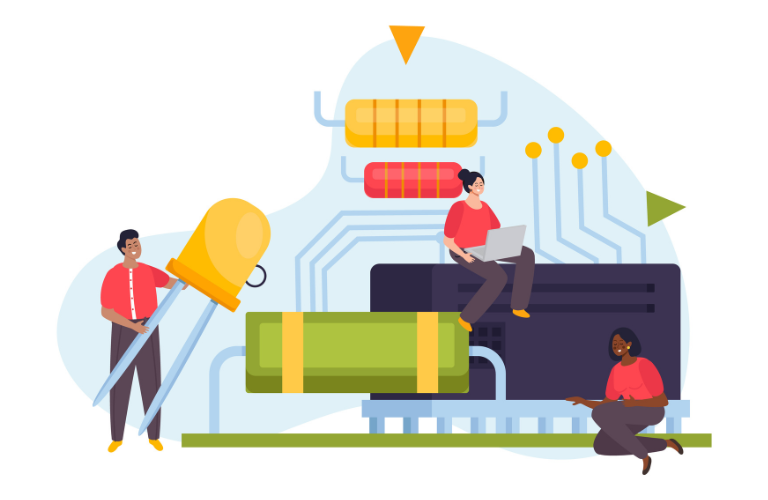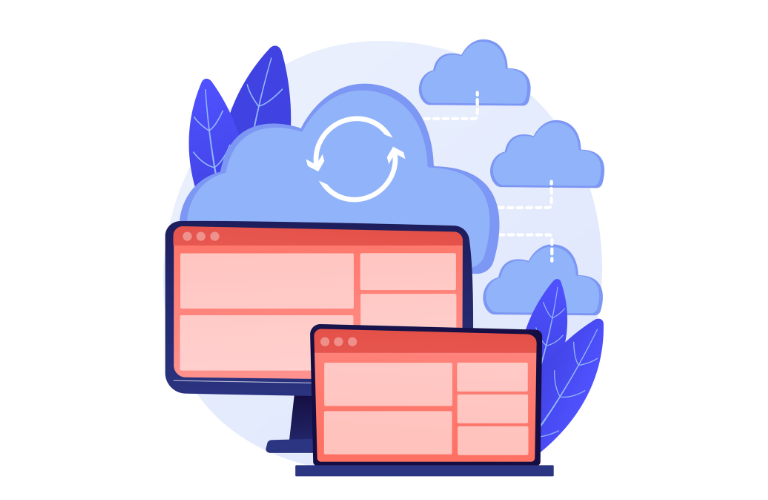Laravel AI task scheduling revolutionizes how developers automate repetitive tasks by combining Laravel’s robust scheduler with artificial intelligence APIs. This approach enables smart, data-driven notifications tailored to user behavior, eliminating the need for manual cron configurations.
In this article, we’ll explore how to implement Laravel AI task scheduling to send personalized alerts, demonstrate a practical job analyzing user data, and compare it with traditional scheduling methods. Whether you’re a Laravel developer or seeking to optimize automation, this guide provides actionable insights to enhance your application’s performance and user engagement.
Table of Contents
Why Use Laravel AI Task Scheduling?
Task scheduling is essential for automating repetitive processes like database backups, report generation, or user notifications. Laravel’s scheduler simplifies this by centralizing task definitions within your application, but integrating AI takes it further. By leveraging AI APIs, you can analyze user data and send intelligent notifications, improving user experience and operational efficiency.
Traditional cron jobs, while effective, require manual server configurations, lack version control, and can’t adapt dynamically to user behavior. Laravel AI task scheduling addresses these pain points by offering a programmatic, AI-enhanced approach that’s maintainable and scalable.
Understanding Laravel’s Task Scheduler
Laravel’s task scheduler allows you to define scheduled tasks within your application’s code, typically in the app/Console/Kernel.php file. It uses a single cron entry to trigger tasks, reducing server management overhead. When paired with an AI API, the scheduler can process complex data and deliver context-aware notifications.
Key benefits include:
- Centralized task management in your codebase.
- Fluent API for scheduling tasks at various intervals.
- Integration with external APIs for intelligent automation.
- Reduced server configuration compared to traditional cron jobs.
Setting Up Laravel AI Task Scheduling
To demonstrate Laravel AI task scheduling, let’s build a demo application that analyzes user activity and sends personalized notifications using an AI API. We’ll use a hypothetical AI service (e.g., OpenAI or a sentiment analysis API) to process user data and trigger alerts.
Prerequisites
Before starting, ensure you have:
- A Laravel project (version 8 or higher) set up.
- PHP and Composer installed.
- Access to a Linux server with cron capabilities.
- An AI API key (e.g., OpenAI, Google Cloud AI, or a custom service).
- A mail service configured in Laravel’s .env file for sending notifications.
Step 1: Create a Laravel Project
If you don’t have a Laravel project, create one using Composer:
composer create-project laravel/laravel ai-task-scheduler
cd ai-task-schedulerStep 2: Configure the AI API
Install the HTTP client package to interact with the AI API:
composer require guzzlehttp/guzzleAdd your AI API key to the .env file:
AI_API_KEY=your_api_key_hereCreate a service class to handle API requests. Run:
php artisan make:service AiAnalysisServiceUpdate app/Services/AiAnalysisService.php:
<?php
namespace App\Services;
use GuzzleHttp\Client;
class AiAnalysisService
{
protected $client;
protected $apiKey;
public function __construct()
{
$this->client = new Client();
$this->apiKey = env('AI_API_KEY');
}
public function analyzeUserData($userData)
{
$response = $this->client->post('https://api.ai-service.com/analyze', [
'headers' => [
'Authorization' => 'Bearer ' . $this->apiKey,
'Content-Type' => 'application/json',
],
'json' => [
'data' => $userData,
],
]);
return json_decode($response->getBody()->getContents(), true);
}
}This service sends user data to the AI API and returns analyzed results, such as sentiment or engagement scores.
Step 3: Create a Scheduled Job
Generate an Artisan command to handle the notification logic:
php artisan make:command SendAiNotificationsUpdate app/Console/Commands/SendAiNotifications.php:
<?php
namespace App\Console\Commands;
use Illuminate\Console\Command;
use App\Services\AiAnalysisService;
use App\Models\User;
use Illuminate\Support\Facades\Mail;
use App\Mail\PersonalizedNotification;
class SendAiNotifications extends Command
{
protected $signature = 'notifications:ai-send';
protected $description = 'Send AI-analyzed personalized notifications to users';
public function __construct()
{
parent::__construct();
}
public function handle()
{
$aiService = new AiAnalysisService();
$users = User::where('active', true)->get();
foreach ($users as $user) {
$userData = [
'activity' => $user->last_activity,
'preferences' => $user->preferences,
];
$analysis = $aiService->analyzeUserData($userData);
if ($analysis['score'] > 0.7) {
Mail::to($user->email)->send(new PersonalizedNotification($analysis));
$this->info("Notification sent to {$user->email}");
}
}
$this->info('AI notifications processed successfully');
}
}This command fetches active users, analyzes their data using the AI service, and sends notifications if the analysis score exceeds a threshold.
Step 4: Create a Mailable Class
Generate a mailable class for the notification email:
php artisan make:mail PersonalizedNotification --markdown=emails.personalizedUpdate app/Mail/PersonalizedNotification.php:
<?php
namespace App\Mail;
use Illuminate\Bus\Queueable;
use Illuminate\Mail\Mailable;
use Illuminate\Queue\SerializesModels;
class PersonalizedNotification extends Mailable
{
use Queueable, SerializesModels;
public $analysis;
public function __construct($analysis)
{
$this->analysis = $analysis;
}
public function build()
{
return $this->markdown('emails.personalized')
->subject('Your Personalized Update');
}
}Create the Markdown template at resources/views/emails/personalized.blade.php:
@component('mail::message')
# Your Personalized Update
Based on your recent activity, we have a tailored recommendation for you:
- **Insight**: {{ $analysis['insight'] }}
- **Score**: {{ $analysis['score'] }}
Keep engaging with us for more updates!
Thanks,
{{ config('app.name') }}
@endcomponentStep 5: Schedule the Task
Open app/Console/Kernel.php and schedule the command:
<?php
namespace App\Console;
use Illuminate\Console\Scheduling\Schedule;
use Illuminate\Foundation\Console\Kernel as ConsoleKernel;
class Kernel extends ConsoleKernel
{
protected function schedule(Schedule $schedule)
{
$schedule->command('notifications:ai-send')
->daily()
->timezone('America/New_York')
->withoutOverlapping()
->thenPing('https://betteruptime.com/api/v1/heartbeat/your_api_key');
}
protected function commands()
{
$this->load(__DIR__.'/Commands');
require base_path('routes/console.php');
}
}This schedules the AI notification job to run daily, prevents overlaps, and pings a monitoring service (e.g., Better Uptime) upon completion.
Step 6: Configure the Cron Job
Add a single cron entry to trigger Laravel’s scheduler every minute:
crontab -eAdd:
* * * * * cd /path-to-your-project && php artisan schedule:run >> /dev/null 2>&1Step 7: Test Locally
Run the scheduler locally to test:
php artisan schedule:workCheck your email inbox for the personalized notification based on the AI analysis.
Demo: AI-Powered Notification Job
Let’s break down the demo job. The SendAiNotifications command:
- Fetches active users from the users table.
- Sends user activity data to the AI API for analysis.
- Evaluates the AI’s response (e.g., a score indicating user engagement).
- Sends a personalized email if the score exceeds 0.7.
This job runs daily, ensuring users receive timely, relevant notifications. For example, if a user hasn’t logged in recently, the AI might suggest re-engagement strategies, and the email will reflect this insight.
Comparing Laravel AI Task Scheduling with Traditional Scheduling
Traditional cron jobs and Laravel AI task scheduling serve similar purposes but differ significantly in implementation and capabilities.
Traditional Cron Jobs
- Setup: Requires manual configuration on the server for each task.
- Maintainability: Lacks version control, making it hard to track changes.
- Flexibility: Limited to static schedules; no dynamic logic without scripts.
- Monitoring: No built-in monitoring or error handling.
Laravel AI Task Scheduling
- Setup: Single cron entry; tasks defined in code.
- Maintainability: Version-controlled within the Laravel codebase.
- Flexibility: Supports AI-driven logic for dynamic, personalized tasks.
- Monitoring: Integrates with tools like Better Uptime for alerts.
Laravel AI task scheduling outperforms traditional methods by combining automation with intelligence, reducing manual work, and enhancing scalability.
Best Practices for Laravel AI Task Scheduling
To optimize your implementation, follow these tips:
- Use Queues: For resource-intensive AI tasks, dispatch jobs to Laravel’s queue system to avoid scheduler delays.
- Prevent Overlaps: Chain withoutOverlapping() to ensure tasks don’t run concurrently.
- Monitor Tasks: Use thenPing() or emailOutputOnFailure() to track task status.
- Handle Errors: Wrap API calls in try-catch blocks and log errors for debugging.
- Optimize Frequency: Balance task frequency (e.g., everyFiveMinutes() vs. daily()) to avoid server overload.
Time-Saving Shortcuts
- Schedule List Command: Run php artisan schedule:list to view all scheduled tasks and their next run time.
- Local Testing: Use php artisan schedule:work for real-time testing without cron setup.
- Group Scheduling: Use group() to apply common settings (e.g., timezone) to multiple tasks:
$schedule->daily()->timezone('America/New_York')->group(function () {
$schedule->command('notifications:ai-send');
$schedule->command('reports:generate');
});Use Cases for Laravel AI Task Scheduling
Beyond notifications, Laravel AI task scheduling can power:
- Sentiment Analysis: Analyze user feedback and alert support teams.
- Predictive Maintenance: Schedule server checks based on AI-driven usage patterns.
- Personalized Marketing: Send tailored offers based on user behavior analysis.
Monitoring and Alerts
To ensure reliability, integrate monitoring tools like Better Uptime. Use the thenPing() hook to notify the service after task execution. If a task fails, configure alerts via email or Slack to address issues promptly.
For internal monitoring, check out Laravel’s logging documentation or explore task scheduling tips for advanced configurations.
Conclusion
Laravel AI task scheduling transforms automation by combining Laravel’s elegant scheduler with AI-driven insights. This guide demonstrated how to set up a job that analyzes user data and sends personalized notifications, offering a significant upgrade over traditional cron jobs. By centralizing tasks, leveraging AI APIs, and following best practices, you can streamline workflows, enhance user engagement, and maintain robust applications.
Ready to implement Laravel AI task scheduling in your project? Start by setting up the demo job and explore AI integrations to unlock smarter automation. For expert guidance, consider hiring Laravel developers to optimize your scheduling strategy.
FAQs
1. What is Laravel AI task scheduling?
Laravel AI task scheduling is a feature that lets you automate repetitive tasks in a Laravel application using its built-in scheduler, enhanced with artificial intelligence APIs. It allows you to schedule tasks like sending smart notifications based on user data analysis, all defined within your codebase for easier management.
2. How does Laravel AI task scheduling differ from cron jobs?
Unlike traditional cron jobs, which require manual server setup and lack version control, Laravel AI task scheduling centralizes task definitions in your Laravel app. It uses a single cron entry and integrates AI to process data dynamically, offering better maintainability and flexibility for tasks like personalized alerts.
3. Can I use Laravel AI task scheduling for real-time notifications?
Yes, you can schedule tasks to run at frequent intervals (e.g., every minute) using Laravel’s scheduler. By integrating an AI API, you can analyze user activity and send near-real-time notifications, though for instant delivery, consider combining it with Laravel’s queue system.
4. How do I set up Laravel AI task scheduling in my project?
To set up Laravel AI task scheduling:
- Create a Laravel project and install an HTTP client (e.g., Guzzle).
- Configure an AI API key in your .env file.
- Define a task in app/Console/Kernel.php using the scheduler.
- Create an Artisan command or job to process AI data and send notifications.
- Add a cron entry (* * * * * cd /path-to-project && php artisan schedule:run) to trigger the scheduler.
5. What are some use cases for Laravel AI task scheduling?
Laravel AI task scheduling is ideal for:
- Sending personalized email alerts based on user behavior.
- Analyzing feedback with sentiment analysis APIs.
- Automating reports with AI-driven insights.
- Scheduling predictive maintenance tasks for servers.
6. How can I monitor Laravel AI scheduled tasks?
You can monitor tasks by:
- Using the thenPing() hook to notify services like Better Uptime after task execution.
- Adding emailOutputOnFailure() to send error alerts.
- Running php artisan schedule:list to view task schedules.
- Logging task outcomes with Laravel’s logging system for debugging.
7. Is Laravel AI task scheduling suitable for beginners?
Yes, Laravel’s scheduler is beginner-friendly with its fluent API and clear documentation. Integrating AI requires basic API knowledge, but by following tutorials (like Laravel’s official docs or this guide), beginners can set up simple AI-driven tasks with minimal coding experience.




